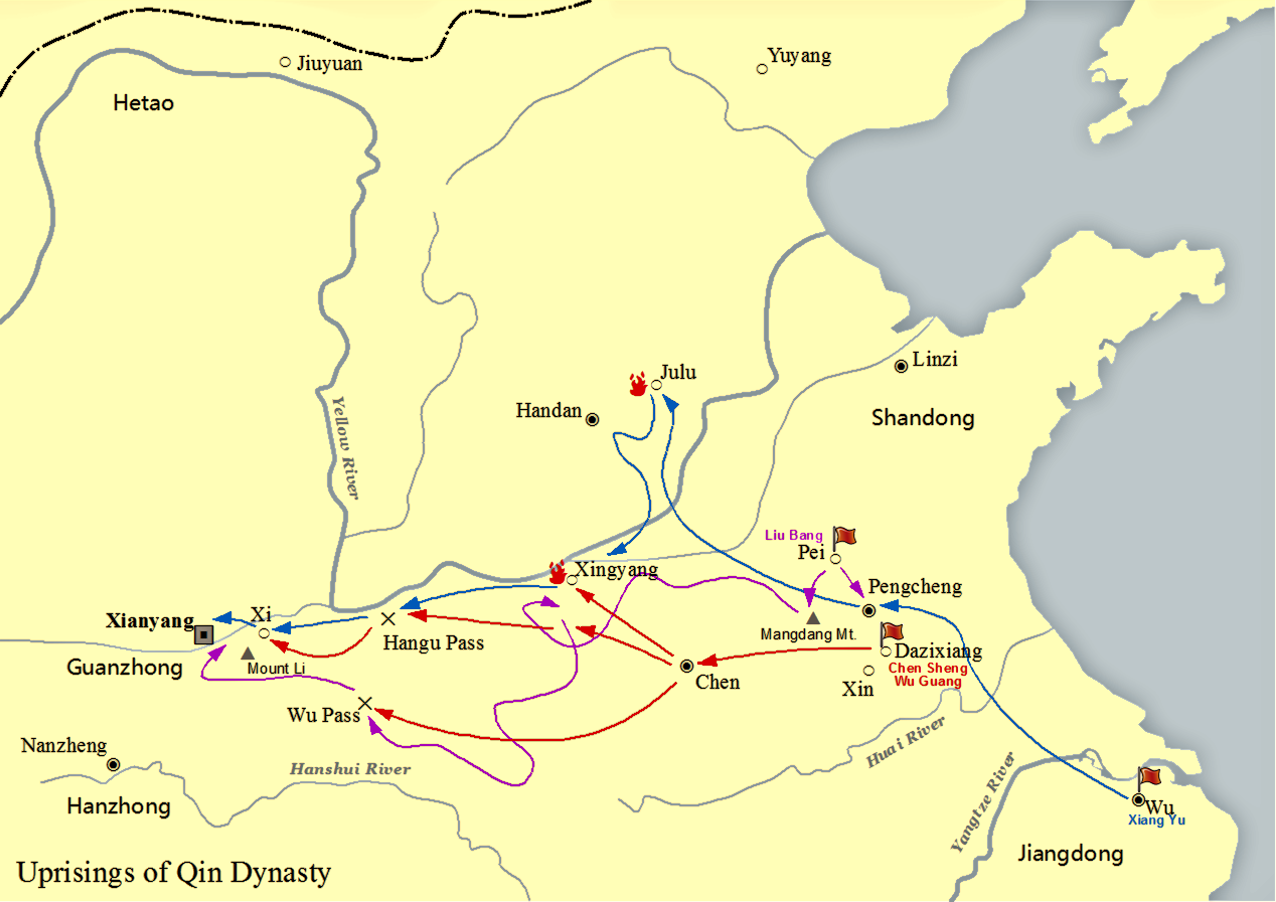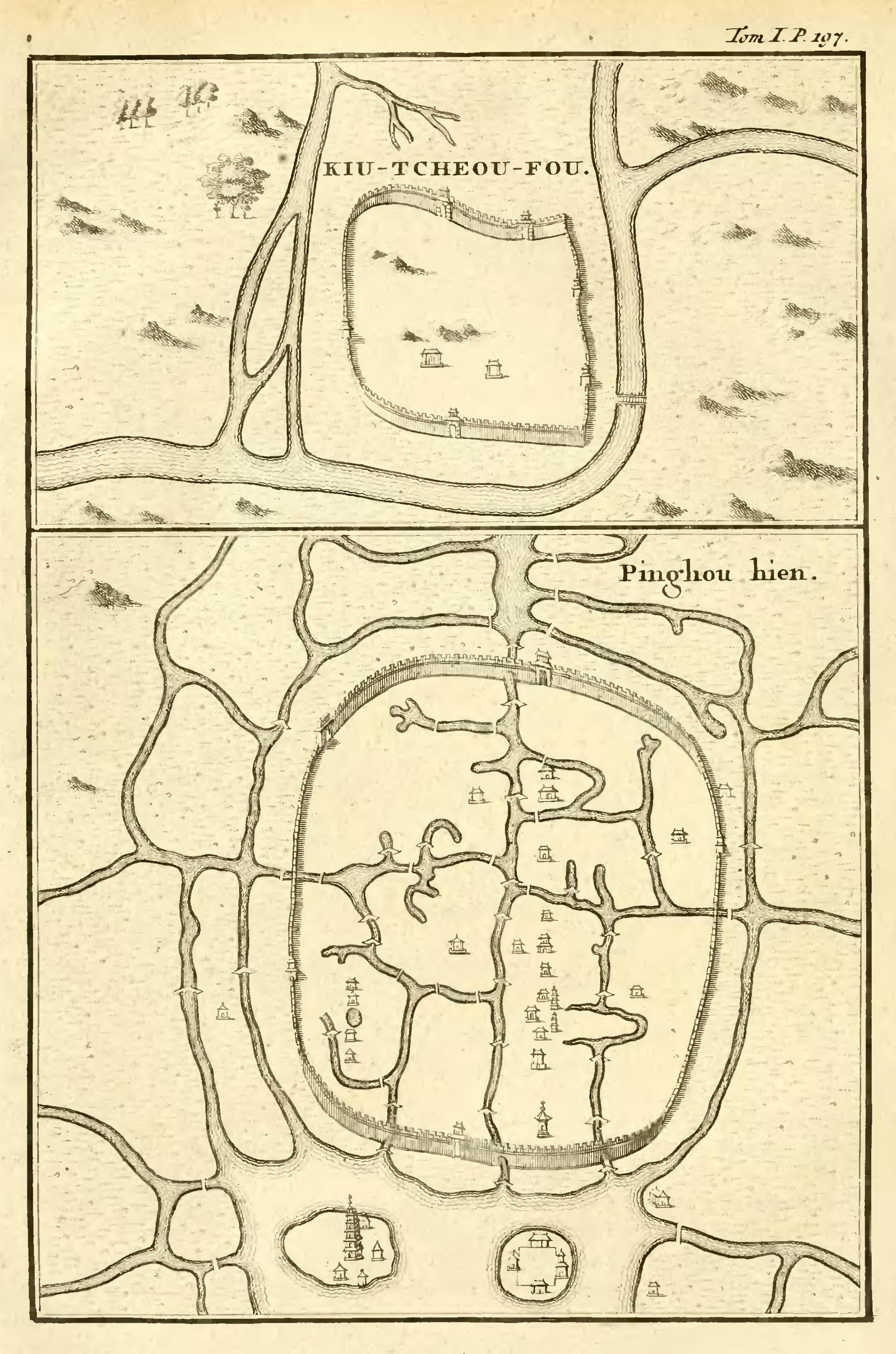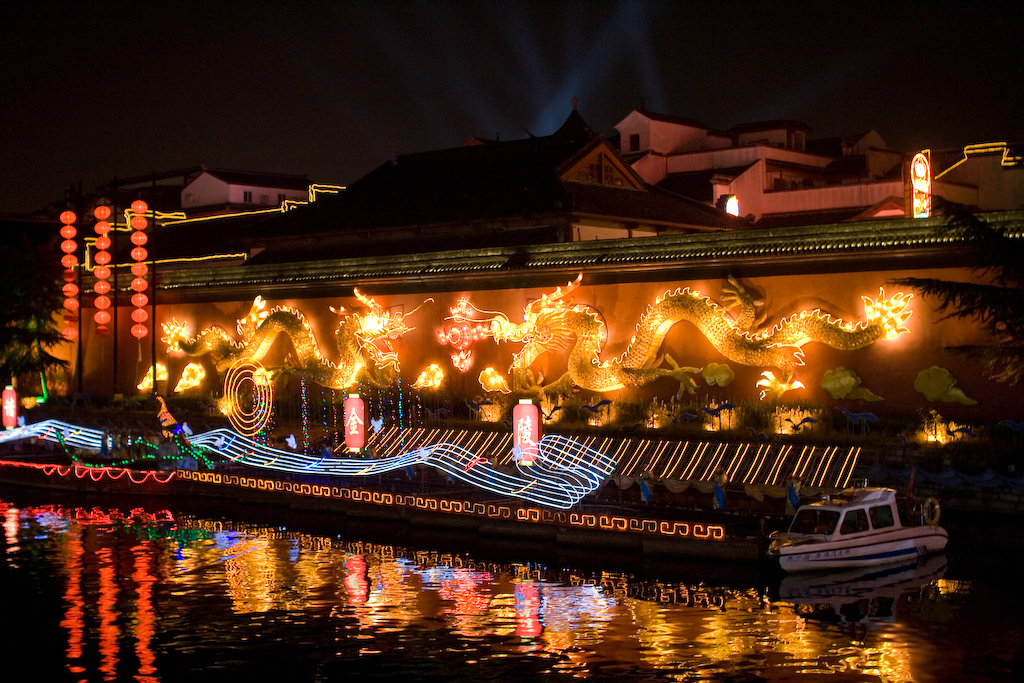|
Temple Of Confucius
A temple of Confucius or Confucian temple is a temple for the veneration of Confucius and the sages and philosophers of Confucianism in Chinese folk religion and other East Asian religions. They were formerly the site of the administration of the imperial examination in China, Korea, Japan and Vietnam and often housed schools and other studying facilities. There is a 72-meter-tall statue of Confucius made of brass and reinforced with steel. The giant statue is located in Qufu, Shandong province, birthplace of the ancient Chinese educator and philosopher. Names The temples are known by a variety of names throughout East Asia. The two greatest temples in Qufu and Beijing are now known in Chinese as (''Kǒngmiào'', 孔廟). In some localities, they are known as (文廟) vi, văn miếu; ind, boen bio) or ( vi, văn thánh miếu). In Southern China, however, temples by that name generally honor Wenchang Wang, a separate deity associated with the scholar Zhang Yazi. In ... [...More Info...] [...Related Items...] OR: [Wikipedia] [Google] [Baidu] |
Temple Of Confucius, Qufu
The Temple of Confucius () in Qufu, Shandong Province, is the largest and most renowned temple of Confucius in East Asia. Since 1994, the Temple of Confucius has been part of the UNESCO World Heritage Site "Temple and Cemetery of Confucius and the Kong Family Mansion in Qufu". The two other parts of the site are the nearby Kong Family Mansion, where the main-line descendants of Confucius lived, and the Cemetery of Confucius a few kilometers to the north, where Confucius and many of his descendants have been buried. Those three sites are collectively known in Qufu as ''San Kong'' (), i.e. "The Three Confucian [sites]". There is a 72-meter-tall statue of Confucius made of brass and reinforced with steel. Qufu, Shandong province, is the birthplace of the ancient Chinese educator and philosopher. History Within two years after the death of Confucius, his former house in Qufu was already consecrated as a temple by the Duke of Lu (state), Lu. In 205 BC, Emperor Gaozu of Han, Gao of ... [...More Info...] [...Related Items...] OR: [Wikipedia] [Google] [Baidu] |
Han Gao Zu
Emperor Gaozu of Han (256 – 1 June 195 BC), born Liu Bang () with courtesy name Ji (季), was the founder and first emperor of the Han dynasty, reigning in 202–195 BC. His temple name was "Taizu" while his posthumous name was Emperor Gao, or Gaodi; "Gaozu of Han", derived from the ''Records of the Grand Historian'', is the common way of referring to this sovereign even though he was not accorded the temple name "Gaozu", which literally means "High Founder". Liu Bang was one of the few dynasty founders in Chinese history who was born into a peasant family. Prior to coming to power, Liu Bang initially served for the Qin dynasty as a minor law enforcement officer in his home town Pei County, within the conquered state of Chu. With the First Emperor's death and the Qin Empire's subsequent political chaos, Liu Bang renounced his civil service position and became an anti-Qin rebel leader. He won the race against fellow rebel leader Xiang Yu to invade the Qin heartland ... [...More Info...] [...Related Items...] OR: [Wikipedia] [Google] [Baidu] |
Quzhou
Quzhou is a prefecture-level city in western Zhejiang province, People's Republic of China. Sitting on the upper course of the Qiantang River, it borders Hangzhou to the north, Jinhua to the east, Lishui to the southeast, and the provinces of Fujian, Jiangxi and Anhui to the south, southwest and northwest respectively. Its population was 2,276,184 inhabitants as of the 2020 Chinese census, 2020 census whom 902,767 lived in the built-up (or metro) area made of Qujiang and Kecheng urban Districts. Chinese actress and singer Zhou Xun was born in Quzhou. History Descendants of Confucius During the Southern Song dynasty the descendant of Confucius at Qufu, the Duke Yansheng Kong Duanyou fled south with the Song Emperor to Quzhou, while the newly established Jin dynasty (1115–1234) in the north appointed Kong Duanyou's brother Kong Duancao who remained in Qufu as Duke Yansheng. From that time up until the Yuan dynasty, there were two Duke Yanshengs, once in the north in Qufu ... [...More Info...] [...Related Items...] OR: [Wikipedia] [Google] [Baidu] |
Lu (state)
Lu (, c. 1042–249 BC) was a vassal state during the Zhou dynasty of ancient China located around modern Shandong province. Founded in the 11th century BC, its rulers were from a cadet branch of the House of Ji (姬) that ruled the Zhou dynasty. The first duke was Boqin, a son of the Duke of Zhou, who was brother of King Wu of Zhou and regent to King Cheng of Zhou. Lu was the home state of Confucius as well as Mozi, and as such has an outsized cultural influence among the states of the Eastern Zhou and in history. The ''Annals of Spring and Autumn'', for instance, was written with the Lu rulers' years as their basis. Another great work of Chinese history, the '' Zuo Zhuan'' or ''Commentary of Zuo'', was also written in Lu by Zuo Qiuming. Geography The state's capital was in Qufu and its territory mainly covered the central and southwest regions of what is now Shandong Province. It was bordered to the north by the powerful state of Qi and to the south by the powerful ... [...More Info...] [...Related Items...] OR: [Wikipedia] [Google] [Baidu] |
Shandong
Shandong ( , ; ; alternately romanized as Shantung) is a coastal province of the People's Republic of China and is part of the East China region. Shandong has played a major role in Chinese history since the beginning of Chinese civilization along the lower reaches of the Yellow River. It has served as a pivotal cultural and religious center for Taoism, Chinese Buddhism and Confucianism. Shandong's Mount Tai is the most revered mountain of Taoism and a site with one of the longest histories of continuous religious worship in the world. The Buddhist temples in the mountains to the south of the provincial capital of Jinan were once among the foremost Buddhist sites in China. The city of Qufu is the birthplace of Confucius and was later established as the center of Confucianism. Confucianism developed from what was later called the Hundred Schools of Thought from the teachings of the Chinese philosopher Confucius. Shandong's location at the intersection of ancient and modern n ... [...More Info...] [...Related Items...] OR: [Wikipedia] [Google] [Baidu] |
Confucian Temple In Beijing
Beijing Temple of Confucius () is the second-largest Confucian temple in China, after the one in Confucius's hometown of Qufu. History The Temple of Confucius in Beijing was built in 1302 during the reign of Temür (Emperor Chengzong) of the Yuan dynasty. The compound was enlarged twice, once during the Ming dynasty and again during the Qing dynasty; it now occupies roughly . Until the Xinhai Revolution, imperial officials of the Yuan, Ming and Qing dynasties hosted ceremonies to pay their formal respects to Confucius in the temple. From 1981 until 2005, the Temple of Confucius also housed part of the art collection of the Capital Museum. It stands on Guozijian Street near the Imperial Academy. Grounds The complex includes four courtyards aligned along a central axis. From south to north, noteworthy structures include the Gate of the Late Master (, ''Xianshimen''), the Gate of Great Accomplishment (, ''Dachengmen''), the Hall of Great Accomplishment (, ''Dachengdian''), and the ... [...More Info...] [...Related Items...] OR: [Wikipedia] [Google] [Baidu] |
Nanjing Fuzimiao
Nanjing Fuzimiao () or Fuzimiao (), is a Confucius Temple and former site of imperial examination hall located in southern Nanjing City on banks of the Qinhuai River. It is now a popular tourist attraction with pedestrian shopping streets around the restored temple buildings. Nanjing Confucius Temple is located in Qinhuai District, Nanjing City, on the north bank of the Qinhuai River Gongyuan Street, Jiangnan Gongyuan west, located in the Confucius temple Qinhuai scenery belt core area, namely Nanjing Confucius Temple, Nanjing Confucian Temple, Wenxuanwang Temple, for the place of worship and sacrifice of Confucius, It is the first national highest institution of learning in China, one of the four major temples of literature in China, the hub of ancient Chinese culture, the place where Nanking history and humanities gather and is not only the cultural and educational centre of Nanjing in the Ming and Qing dynasties but also the cultural and educational architectural complex that ... [...More Info...] [...Related Items...] OR: [Wikipedia] [Google] [Baidu] |
Forest Of Steles
The Stele Forest or Beilin Museum is a museum for steles and stone sculptures in Beilin District in Xi'an, Northwest China. The museum, which is housed in a former Confucian Temple, has housed a growing collection of Steles since 1087. By 1944 it was the principal museum for Shaanxi province. Due to the large number of steles, it was officially renamed the Forest of Stone Steles in 1992. Altogether, there are 3,000 steles in the museum, which is divided into seven exhibitions halls, which mainly display works of Chinese calligraphy, painting and historical records. History The Stele Forest began with the ''Kaicheng Shi Jing Steles'' () and ''Shitai Xiao Jing Steles'' (), two groups of steles both carved in the Tang dynasty and displayed in the temple to Confucius and the Imperial College in Chang'an, capital of the empire. In 904, a rebel army sacked Chang'an, and the steles were evacuated to the inner city. In 962, they were returned to the rebuilt temple. In the Song dynasty ... [...More Info...] [...Related Items...] OR: [Wikipedia] [Google] [Baidu] |
Xi'an
Xi'an ( , ; ; Chinese: ), frequently spelled as Xian and also known by #Name, other names, is the list of capitals in China, capital of Shaanxi, Shaanxi Province. A Sub-provincial division#Sub-provincial municipalities, sub-provincial city on the Guanzhong, Guanzhong Plain, the city is the third most populous city in Western China, after Chongqing and Chengdu, as well as the most populous city in Northwest China. Its total population was 12,952,907 as of the 2020 census. The total urban population was 9.28 million. Since the 1980s, as part of the China Western Development, economic growth of inland China especially for the central and northwest regions, Xi'an has re-emerged as a cultural, industrial, political and educational centre of the entire central-northwest region, with many facilities for research and development. Xi'an currently holds sub-provincial city in the People's Republic of China, sub-provincial status, administering 11 districts and 2 counties. In 2020, Xi'a ... [...More Info...] [...Related Items...] OR: [Wikipedia] [Google] [Baidu] |
Jianshui
Jianshui County (; Hani: ''Jeifsyu'') is a city in Honghe prefecture, Yunnan province, China. and remains an important transportation crossroad. Previously, it has been known as Lin'an () or Huili (); today, the name Lin'an Town is retained by Jianshui's county seat. Geography To the east lies Jijie, to the west Shiping, to the southeast Gejiu and Yuanyang, to the north Tonghai. Administrative divisions Jianshui County has 8 towns and 6 townships. ;8 towns ;6 townships Climate Tourist attractions *''Chao Yang Lou'' (Old East City Gate), Formerly known as Yinghuimen, Located at the eastern end of Lin'an Road, southeast of the county town. Built in the 22nd year of Hongwu in the Ming Dynasty (1389). *''Hutong''s or 'old neighbourhoods' with cobbled streets and stone wells. *Temple of Confucius, Jianshui - one of the largest Confucian temples in China, after that of Qufu, Shandong, Confucius' home town. *Shuanglong Bridge (pinyin 'shuang long qiao'), commonly known as Se ... [...More Info...] [...Related Items...] OR: [Wikipedia] [Google] [Baidu] |
Tang Dynasty
The Tang dynasty (, ; zh, t= ), or Tang Empire, was an Dynasties in Chinese history, imperial dynasty of China that ruled from 618 to 907 AD, with an Zhou dynasty (690–705), interregnum between 690 and 705. It was preceded by the Sui dynasty and followed by the Five Dynasties and Ten Kingdoms period. Historians generally regard the Tang as a high point in Chinese civilization, and a Golden age (metaphor), golden age of cosmopolitan culture. Tang territory, acquired through the military campaigns of its early rulers, rivaled that of the Han dynasty. The House of Li, Lǐ family () founded the dynasty, seizing power during the decline and collapse of the Sui Empire and inaugurating a period of progress and stability in the first half of the dynasty's rule. The dynasty was formally interrupted during 690–705 when Empress Wu Zetian seized the throne, proclaiming the Zhou dynasty (690–705), Wu Zhou dynasty and becoming the only legitimate Chinese empress regnant. The devast ... [...More Info...] [...Related Items...] OR: [Wikipedia] [Google] [Baidu] |
Northern Wei
Wei (), known in historiography as the Northern Wei (), Tuoba Wei (), Yuan Wei () and Later Wei (), was founded by the Tuoba (Tabgach) clan of the Xianbei. The first of the Northern and Southern dynasties#Northern dynasties, Northern dynasties, it ruled northern China from 386 to 535 during the period of the Northern and Southern dynasties. Described as "part of an era of political turbulence and intense social and cultural change", the Northern Wei dynasty is particularly noted for unifying northern China in 439, bringing to an end the chaotic Sixteen Kingdoms period, and strengthening imperial control over the rural landscape via reforms in 485. This was also a period of introduced foreign ideas, such as Buddhism, which became firmly established. The Northern Wei were referred to as "Plaited Barbarians" (索虜 ''suolu'') by writers of the Southern dynasties, who considered themselves the true upholders of Chinese culture. During the Taihe period (477–499), Empress Dowager ... [...More Info...] [...Related Items...] OR: [Wikipedia] [Google] [Baidu] |







